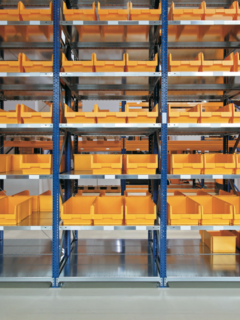Customer satisfaction is a marketing term that measures the success of products or services against customer expectations.
Why is customer satisfaction important to you?
1. It promotes the likelihood of continued purchase
The clearest indicator of a satisfied customer is repeat purchase or repeat use of services. But how do you know if they were satisfied with the service? Asking a simple question about a customer’s satisfaction rating on a scale of 1 to 10 can tell you a lot about how satisfied they were. A customer who rates their experience as a 7 or higher is considered a satisfied customer who may repeat their purchase in the future. Customers who gave a rating of 9 or 10 are part of a group of potential promoters whose positive experience may escalate to the point where they become “evangelists” for your brand.
A score of less than 6 is a warning sign. A customer with such a rating belongs to the group of customers who are unlikely to return a second time. We recommend analyzing their experience to identify the reason for their dissatisfaction.
Frederick F. Reichheld and Phil Schefter of Harvard Business School analyzed the costs and revenues associated with complete customer care across the entire buying cycle. The study showed that increasing the number of returning customers by just 5% can result in a 25% to 95% increase in profits. Bain & Company followed Reichheld and Schefter’s study and found that a 10% increase in customer retention (repeat purchases by a single customer) results in a 30% increase in overall company value. Monitoring the number of repeat customers is therefore the best way to determine customer satisfaction and build a successful company.
2. Builds customer loyalty
A satisfied customer represents the possibility of turning into a loyal customer. The difference between a satisfied customer and a loyal customer is that the loyal customer is so satisfied with the product or service that they are not looking elsewhere. Research conducted by Defaqto has demonstrated that 55% of customers are willing to pay more if they are given better customer service and shopping experience. A loyal customer will automatically return to a site they have a positive experience with.
3. It represents a strategic advantage and differentiation from competitors
A customer is 4 times more likely to purchase from a competitor or use another company’s service when confronted with a customer service and communication issue than when it is related to price or merchandise. The level and extent of customer satisfaction is a key differentiator between companies fighting for the same customers. Companies that provide excellent customer care across the entire process of buying or using services thus create an environment in which satisfaction is high and there are many loyal customers.
4. Reduces customer turnover
Up to 70% of the overall customer shopping experience is the subjective feeling about the care provided that customers gain during the shopping experience. Additionally, according to Harvard Business Review, more than 33% of customers would recommend a company or brand that provided a quick, albeit ineffective response, while only 17% of customers would recommend a brand when provided with a slow, yet effective response. Customer turnover is therefore significantly minimised when customer communication is fast.
5. Increases overall customer value
An InfoQuest case study conducted in 40 countries across more than 20,000 customer surveys demonstrated that an absolutely satisfied customer contributes 2.6 times more to a company’s revenue than a quite satisfied customer. In addition, an absolutely satisfied customer generates 14 times more revenue than a fairly satisfied customer. Satisfaction plays a significant role in the amount of profit generated by the customer. If businesses can increase the overall value of the customer, the return on the financial resources invested in marketing will also increase.
6. Eliminates negative reactions to products, services, brand or vendors
Areas that can cause negative customer experiences must first be identified and then improved. A single negative experience has 5 times more impact on a business than a positive experience.
One of the reasons that breed customer dissatisfaction when shopping in e-stores is poor quality packaging of the goods ordered. When the packaging is of poor quality and the goods are damaged on delivery, customer dissatisfaction can cause a chain of negative reactions that can have a far-reaching impact on the e-commerce operation and brand perception. It is also not an isolated case of incorrect goods being delivered because the packaging was not labelled to allow the goods to be inspected before dispatch, thus preventing incorrect shipment.
A dissatisfied customer will never repeat the purchase in the first place. He will not tell other people about his purchase, the shopping experience and also the product itself and the chance for businesses to build a loyal customer is completely eliminated. A dissatisfied customer risks spreading a negative review that causes a breakdown in trust in the quality of the product or service, and is very difficult to compensate for. According to Parature, it takes 12 positive reviews to minimize the damage of a single negative review.
7. Retaining satisfied customers is less costly than acquiring new customers
Acquiring customers is 6 to 7 times more expensive than retaining existing ones. In addition, an existing customer is 14 times more likely to repeat their purchase than a new customer. Businesses invest significant financial resources in building a basic awareness of the existence of the company and their products and services. Further investment goes into creating a belief that a customer’s decision to buy or use a service in an e-shop is the right one. In most cases, much less resources are invested in maintaining customer satisfaction, losing out on the huge potential for generating further profit.
Basic metrics for measuring customer satisfaction
1. Quality of service provided
The ability to handle a customer’s query during the first phone or email communication is the foundation of success. In a business using logistics services, on the other hand, delivering goods without any damage and especially on time is crucial.
2. Ability to retain customers
Returning customer retention is an easily measurable metric that best demonstrates customer satisfaction, which is confirmed by repeat purchases.
3. Response time
A short response time when interacting with a customer is a key element that influences satisfaction when shopping in e-stores or providing services via the Internet. An immediate response inspires a sense of trust and demonstrates a high level of customer care.
4. Time spent with the customer
The time spent communicating with the customer must represent a compromise between the time that can be given to the customer and the time required to resolve their request. This time should ideally be as short as possible and should try to meet the basic rule of resolving the customer’s requirements during the first interaction.
5. Number of incomplete orders and complaints
The incompletion of an order or a complaint of an ordered item is a basic metric for measuring customer satisfaction. Just as important as knowing how many orders have been complained about or incomplete is to identify and understand why.














